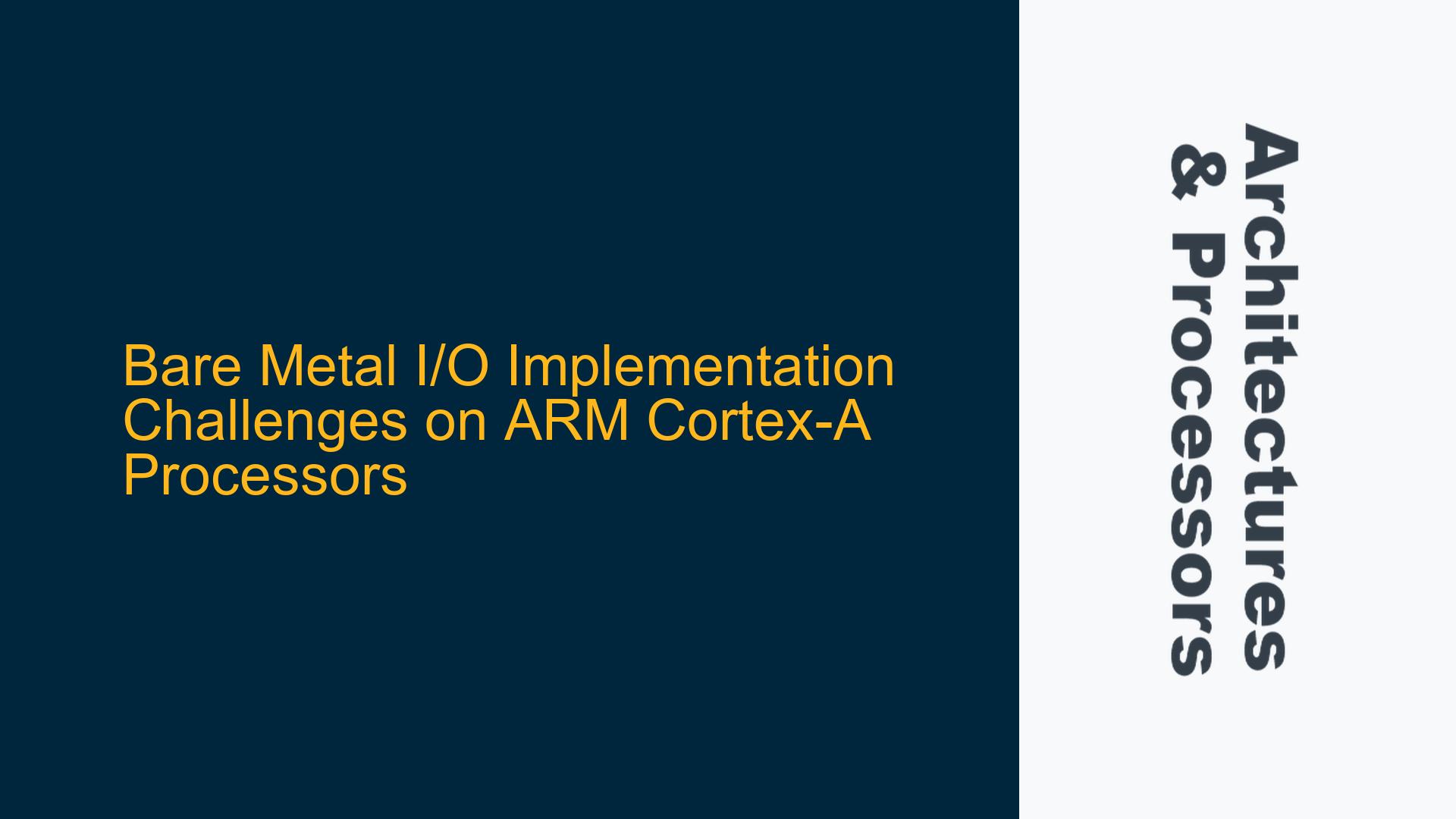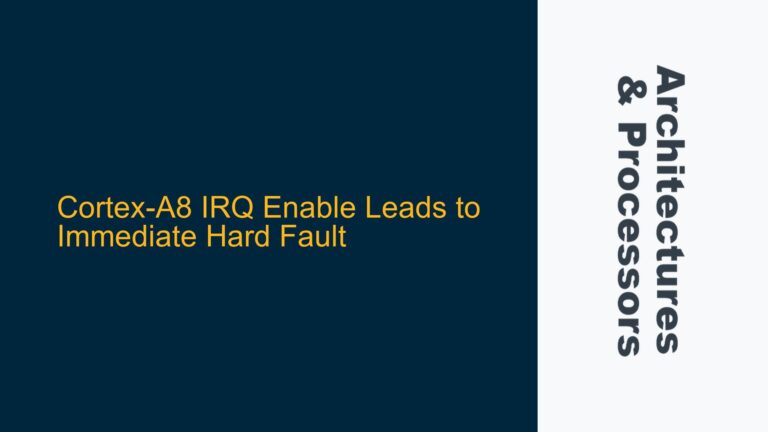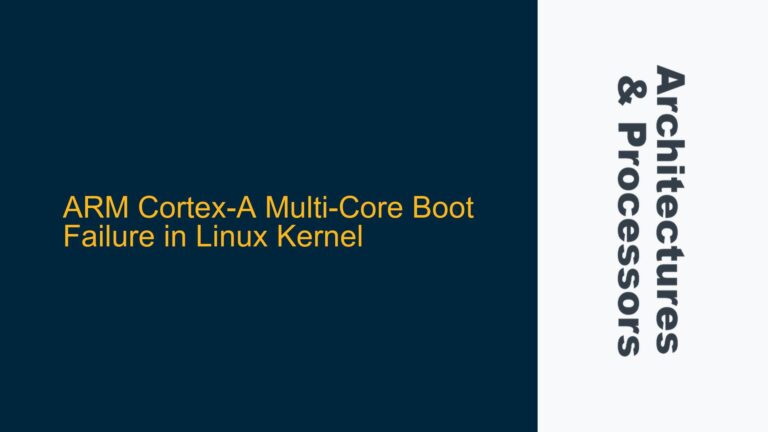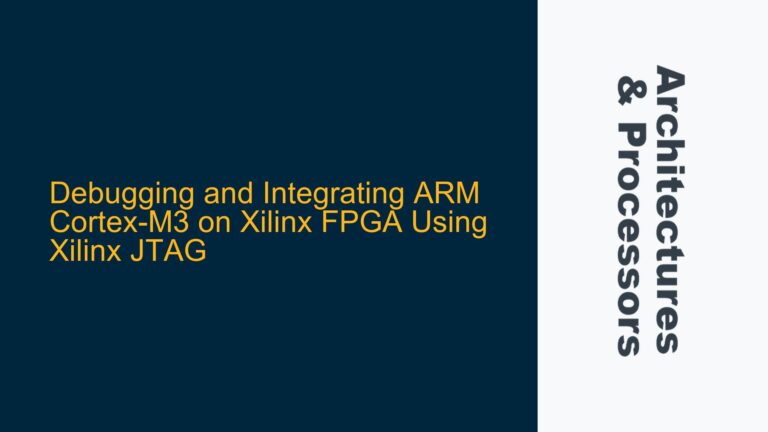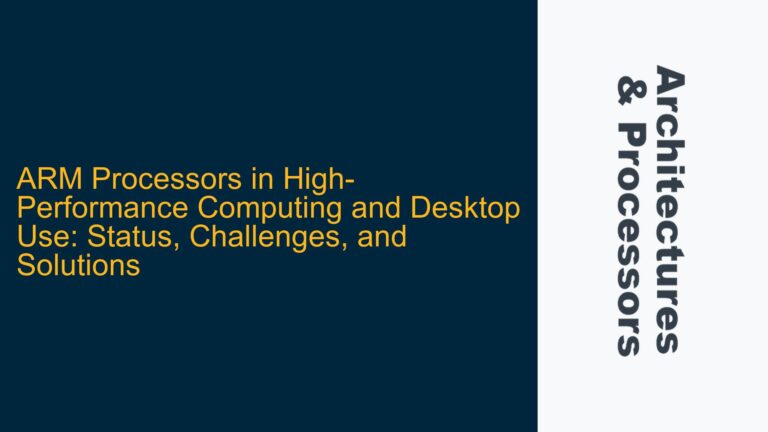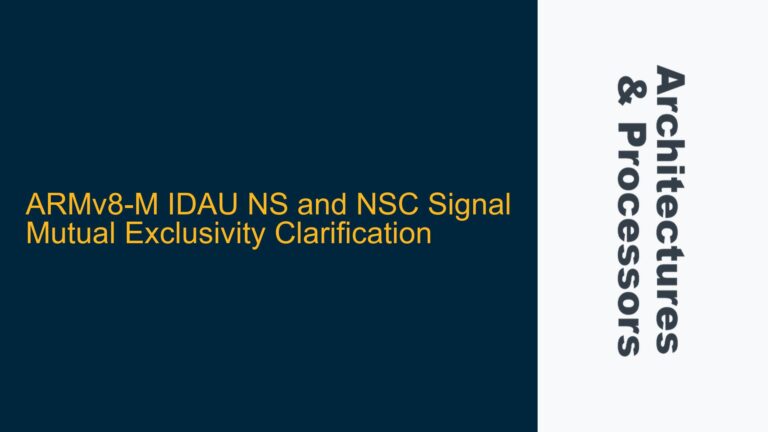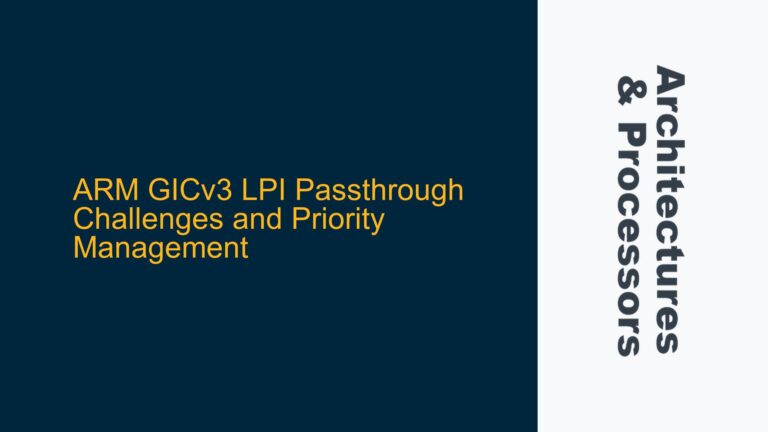ARM Cortex-A Bare Metal I/O Architecture and Documentation Gaps
When working with ARM Cortex-A processors in a bare-metal environment, one of the most significant challenges is understanding and implementing I/O operations without the abstraction layers provided by an operating system. The Cortex-A series, known for its application-grade performance, is typically integrated into complex System-on-Chip (SoC) designs. These SoCs include various peripherals such as USB controllers, HDMI interfaces, and storage controllers, which are memory-mapped and require precise configuration and management.
The ARMv8 architecture reference manual provides a comprehensive overview of the processor’s instruction set, memory management, and exception handling. However, it does not delve into the specifics of peripheral I/O operations, as these are typically vendor-specific. This creates a documentation gap for developers aiming to implement bare-metal I/O, as they must rely on the technical reference manuals (TRMs) provided by the SoC vendor. These manuals detail the memory-mapped registers, their functions, and the protocols required to interact with peripherals.
For instance, to communicate with a USB controller, a developer must understand the USB protocol, the controller’s register layout, and how to configure DMA transfers. Similarly, driving an HDMI interface requires knowledge of the display controller’s registers, timing parameters, and pixel data formatting. Without vendor-provided documentation, these tasks become nearly impossible, as the ARM architecture manuals do not cover these specifics.
Vendor-Specific Peripheral Controllers and Memory-Mapped I/O
The root cause of the confusion and challenges in bare-metal I/O implementation lies in the separation of concerns between ARM and SoC vendors. ARM designs the CPU cores and provides the architecture reference manuals, but the peripherals and their integration into the SoC are the responsibility of the vendor. This means that the documentation for I/O operations is fragmented across multiple sources, with ARM providing the CPU architecture details and the vendor supplying the peripheral-specific information.
For example, a USB controller integrated into an SoC will have its own set of memory-mapped registers, which are not standardized across different vendors. These registers control aspects such as endpoint configuration, data transfer, and interrupt handling. Without the vendor’s TRM, a developer cannot determine the correct register addresses, bit fields, or operational sequences required to initialize and use the USB controller.
Similarly, graphics processing units (GPUs) and display controllers are highly vendor-specific. While ARM provides the Mali GPU series, many SoCs use third-party GPUs or custom display controllers. These components have their own programming models, register interfaces, and timing requirements, which are not covered in the ARM architecture manuals.
This fragmentation of documentation creates a significant barrier for developers aiming to implement bare-metal I/O. They must not only understand the ARM architecture but also navigate the vendor-specific documentation, which can vary widely in quality, detail, and accessibility.
Strategies for Accessing and Utilizing Vendor Documentation
To overcome the challenges of bare-metal I/O implementation on ARM Cortex-A processors, developers must adopt a systematic approach to accessing and utilizing vendor documentation. The first step is to identify the specific SoC being used and obtain its technical reference manual (TRM) from the vendor. This document will provide the necessary details on the memory-mapped peripherals, their register layouts, and the protocols required to interact with them.
Once the TRM is obtained, the next step is to map out the peripheral registers and their functions. This involves creating a detailed register map, which can be used as a reference during development. For example, a USB controller’s register map might include registers for endpoint configuration, data buffers, and interrupt status. By understanding the layout and function of these registers, a developer can write the necessary code to initialize and control the USB controller.
In addition to the TRM, developers should also consult any available application notes, reference designs, or example code provided by the vendor. These resources can provide valuable insights into the correct usage of the peripherals and help avoid common pitfalls. For instance, an application note might detail the sequence of operations required to configure a display controller for a specific resolution and refresh rate.
Another important strategy is to leverage open-source projects and community resources. Many ARM-based platforms have active developer communities that share code, documentation, and best practices. By participating in these communities, developers can gain access to a wealth of knowledge and experience, which can significantly accelerate the development process.
Finally, developers should consider using simulation and emulation tools to test their bare-metal I/O code. These tools can provide a controlled environment for debugging and validation, allowing developers to identify and resolve issues before deploying their code on actual hardware. For example, a simulator might allow a developer to test USB communication without needing physical USB devices, while an emulator could provide insights into the timing and behavior of a display controller.
By following these strategies, developers can effectively navigate the complexities of bare-metal I/O implementation on ARM Cortex-A processors. While the process can be challenging, the rewards of achieving low-level control and optimization are well worth the effort. With a thorough understanding of the ARM architecture and the vendor-specific peripherals, developers can unlock the full potential of their hardware and create robust, high-performance embedded systems.
